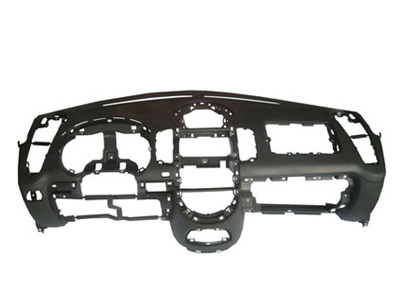Large injection molding, precision injection molding an […]
Large injection molding, precision injection molding and thin-wall injection molding are the three main forms of injection molding. Different injection molding processes have different requirements for molds. With the rapid economic development and the improvement of people's living standards, people have higher and higher development requirements in large-capacity washing machines, large-screen TVs, automobiles, aerospace, etc., and corresponding large-scale injection molding. At present, the division of large injection molds has not yet formed a unified standard. It is generally considered that a mold larger than 3000 square centimeters can be called a large injection mold. At the same time, there are more than 2 tons of mold quality called large injection mold. Compared with ordinary injection molding, large injection molding products have the characteristics of large volume and good quality.
Large-scale injection molds also have their own positioning, and have their own unique requirements in mold design, mold material selection, etc., which are embodied in the following aspects: 1. Cavity, strength, and rigidity requirements. Due to the high pressure of the melt, the cavity of the large injection mold is prone to large deformation, and the elastic deformation increases with the increase of the size and pressure of the cavity. (2) Requirements for cavity composition. Compared with small and medium-sized injection molds, the cavity and core structure of large-scale injection molds are more complicated. In order to improve efficiency and save raw materials, large-scale injection molds often use modular cavity structures, and more complex cavity combinations require higher requirements.
Many injection molded products will have peculiar smell during processing, and users will feel uncomfortable. So how to avoid this situation during the injection process?
1. Strictly control the use of additives
The tertiary amine catalyst used in the production of polyurethane foam usually causes a very strong smell, and moisture in the window of the car, we can find that instead of using polyols, polyols are composed of not only polyurethane molecular chains, but also have the same catalytic activity. Some polyols can even replace half of the tertiary amine catalyst, so the smell of injection molded products disappears.
2. Use more pure resin
Many plastics, especially polyvinyl chloride, styrene, ethyl acetate, acrylate, and other residual trace monomers, produce odors. Very few monomer residues can be used to remove odors, and odorless resins are the best choice.
3. Pay attention to the use of adsorbent
If a small amount of zeolite is added to the polymer, the information smell can be removed. Zeolite crystals have a lot of blur, which can trap small molecules like gas.
www.xlpmould.net


Add: No.9 Hengtai Road, Tinghu Economic Development Zone, Yancheng City, Jiangsu, China
Tel: 0086-515-89806501
Fax: 0086-515-89806502
E-mail: [email protected]

 TOP
TOP